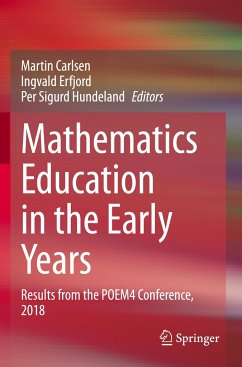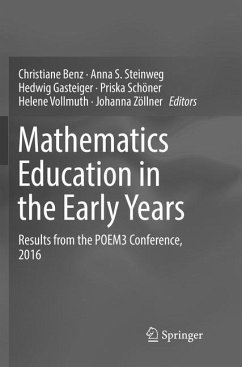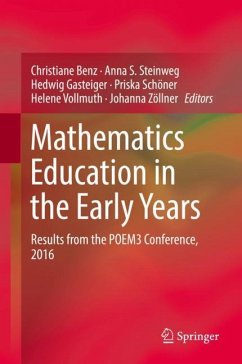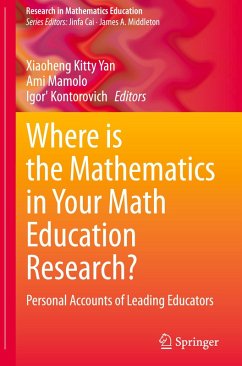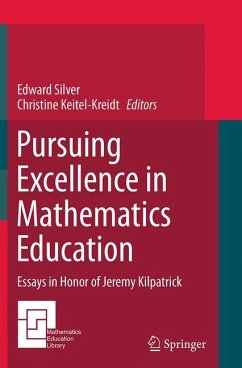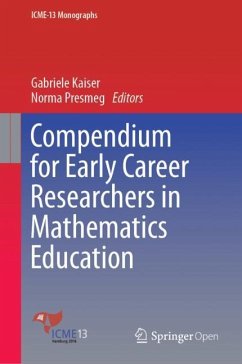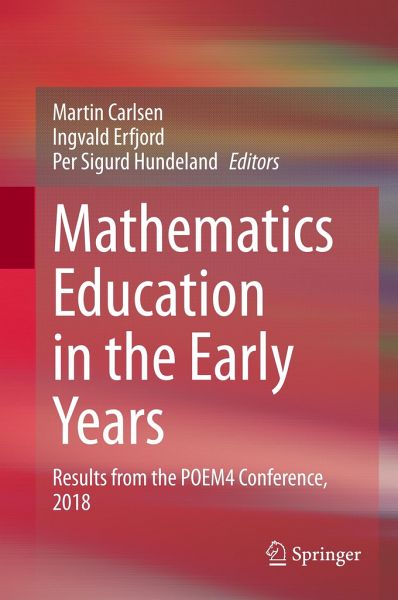
Mathematics Education in the Early Years
Results from the POEM4 Conference, 2018
Herausgegeben: Carlsen, Martin; Erfjord, Ingvald; Hundeland, Per Sigurd

PAYBACK Punkte
61 °P sammeln!
This book gives insights in the vivid research area of early mathematics learning. The collection of selected chapters mirrors the research topics presented at the fourth POEM conference in May 2018. Thematically, the volume reflects the importance of this evolving area of research, which has begun to attract attention in the spheres of education and public policy due to increased interest in early years learning. The research foci of the chapters comprise children's mathematical reasoning, early years mathematics teaching, and the role of parents for children's mathematical development. The 2...
This book gives insights in the vivid research area of early mathematics learning. The collection of selected chapters mirrors the research topics presented at the fourth POEM conference in May 2018. Thematically, the volume reflects the importance of this evolving area of research, which has begun to attract attention in the spheres of education and public policy due to increased interest in early years learning. The research foci of the chapters comprise children's mathematical reasoning, early years mathematics teaching, and the role of parents for children's mathematical development. The 2018 conference included a wider range of researchers than previous years.



